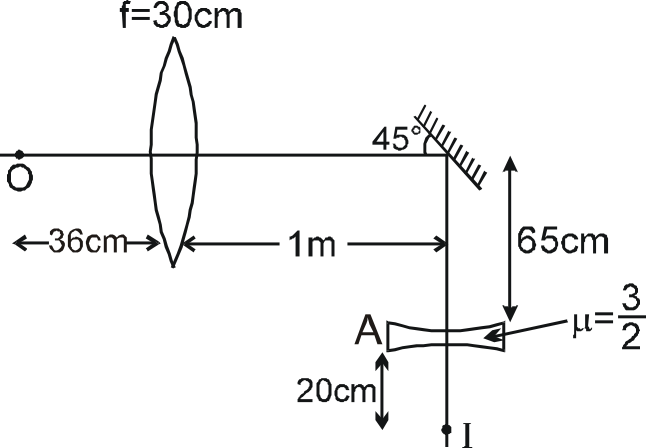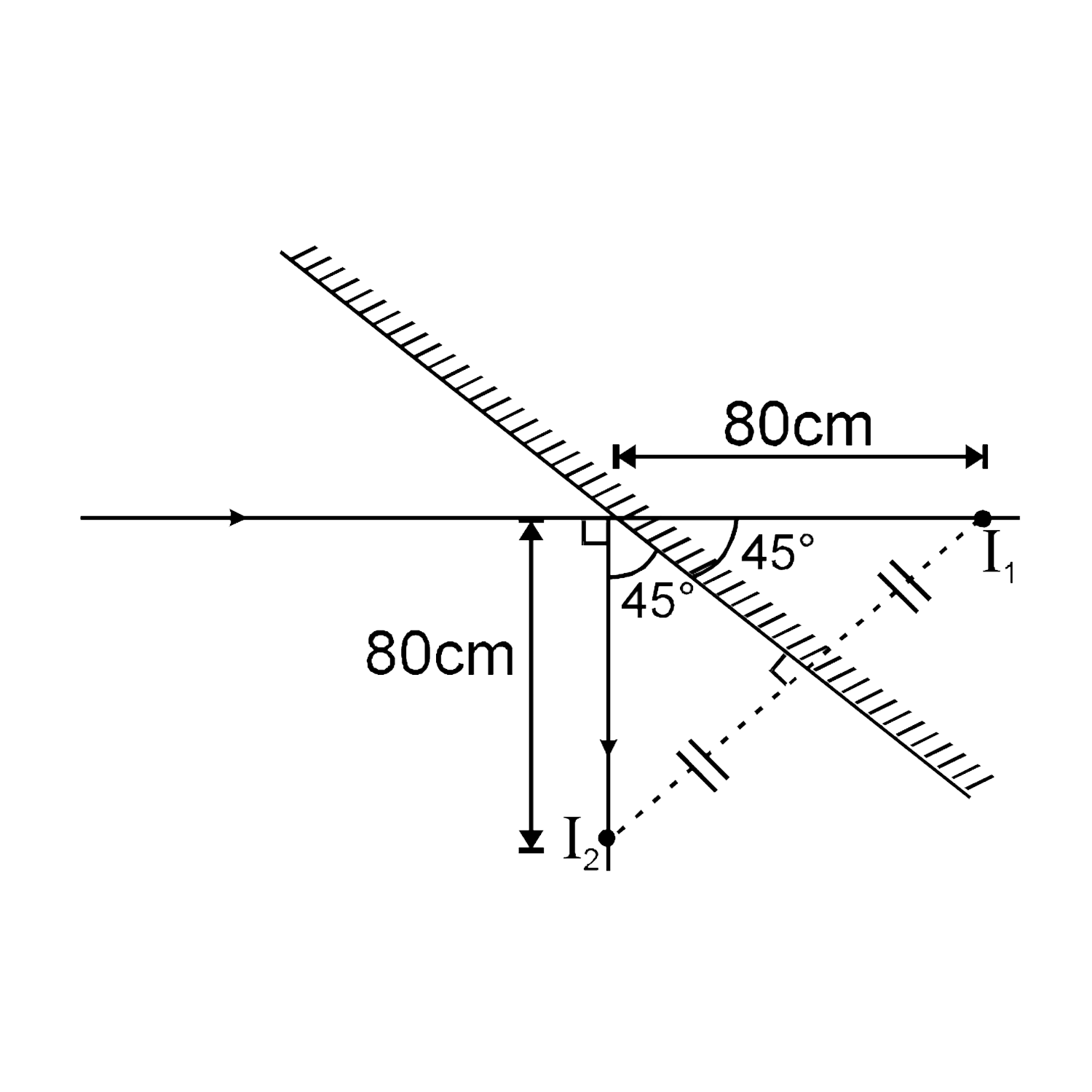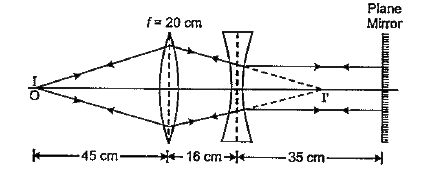
The final image of the object O shown in the figure is formed at point 20 cm below a thin equi-concave
lens, which is at a depth of 65 cm from principal axis. From the given geometry, calculate the radius of
curvature in cm of lens kept at "A". (Refractive index of equi-convex lens is 1.5 and placed in air.

Image formation due to convex lens
1v−1−36=130⇒v=30×366=180cm
This image will act like a virtual object for mirror and after reflection from mirror its image (shown by I2 ) will be formed at 80 cm below optical axis of convex lens. ltbr> For concave lens, this image will be object at a position of 15 cm below the lens for final image formed by concave lens
120−115=1f 1f=−5300
Also
1f=(μ−1)(−1R−1R)
or −5300=(32−1)(−2R)⇒R=3005
Topper's Solved these Questions
Similar Questions
Knowledge Check
- Question 1 - Select One
The radius curvature of each surface of a convex lens of refractive index 1.5 is 40 cm. Calculate its power.
A2.5DB2DC1.5DD1D - Question 2 - Select One
The radius of curvature of the curved surface of a plano-convex lens is 20cm. If the refractive index of the material of the lens be 1.5, it will
Aact as a convex lens only for the objects that lie on its curved side.Bact as a concave lens for the objects that lie on its curved side.Cact as a convex lens irrespective of the side on which the object lies.Dact as a concave lens irrespective of side on which the object lies.
Surfaces of a thin equi-convex glass lens have radius of curvature R. Paraxial rays are incident on it . If the final image is formed after n internal reflections, calculate distance of this image from pole of the lens. Refractive index of glass is μ.
View SolutionA plano convex lens has radius of curvature 10 cm. Its focal length is 80 cm under water. Calculate the refractive index of the material of the lens, given refractive index of water is 4/3.
View SolutionWhen an object is placed 40cm from a diverging lens, its virtual image is formed 20cm from the lens. The focal length and power of lens are
View SolutionAn object is placed at a distance of 20cm from a equi-concave lens of focal length 30cm, whose one surface is silvered. If the radius of curvature of the silvered surface is 60cm, find the position and nature of the image.
View SolutionThe figure below shows the positions of a point object 0, two lenses, a plane mirror and the final image I which coincides with the object. The focal length of the convex lens is 20 cm. Calculate the focal length of the concave lens.
 View Solution
View SolutionA thin plano-convex lens acts like a concave mirror of radius of curvature 20cm when its plane surface is silvered. The radius of curvature of the curved surface if index of refraction of its matarial is 1.5 will be
View Solution

